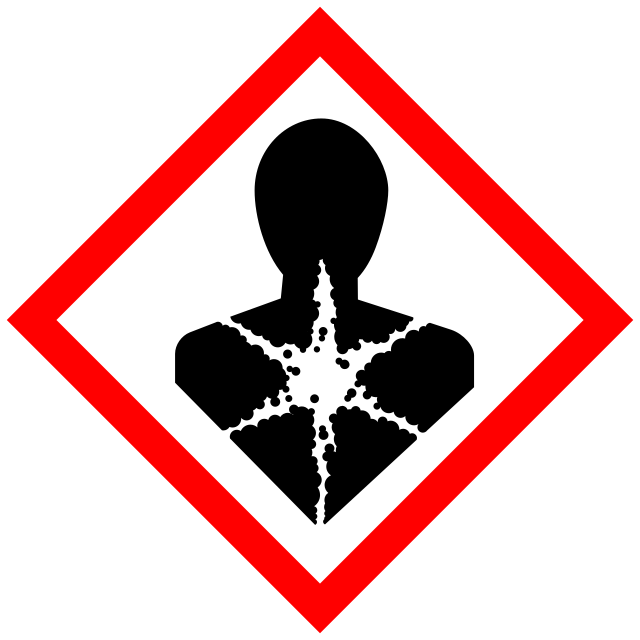Teratogen
agent that causes the production of physical defects in the developing embryo From Wikipedia, the free encyclopedia
Remove ads
A teratogen is a material that can cause birth defects. Teratogens include some chemicals, medications, and infectious diseases. The name goes back to Ancient Greek "theras", which can be translated as "monster".

About 75% of all birth defects are caused by teratogens.[1][2]p. 23-3
Remove ads
Types of teratogens
Alcohol and illegal drugs
Alcohol is the most common cause of congenital disorders that can be prevented.[3] Alcohol is poisonous to a fetus and can cause brain damage.[4] Drinking alcohol while pregnant can cause the fetus to get fetal alcohol syndrome.[3]
Illegal drugs, like heroin and cocaine, are also poisonous to the fetus and can cause many different congenital problems. For example, cocaine use during pregnancy can cause microcephaly (a smaller head size than usual) and problems with the way the fetus's urinary system and genitals grow.[1]
Medications

Some medications can also hurt the fetus if its mother takes them while she is pregnant. For example:[1][2]p. 23-6
- Lithium carbonate (used to treat bipolar disorder) can cause problems in the way the fetus's heart grows
- Phenytoin and valproic acid (anti-seizure medications) can cause intellectual disability, microcephaly, and many other problems in fetuses
- Warfarin (a blood-thinning medication) can cause problems with the fetus's central nervous system, including intellectual disability
- ACE inhibitors (a group of medications for high blood pressure) can cause problems with the fetus's kidneys
Before the 1960s, many countries did not have rules about testing medications for their effects on fetuses.[5] This changed partly because of thalidomide. This medication was given to pregnant women for nausea in the 1950s and 1960s. Between 1956 and 1962, more than 10,000 children in 46 different countries were born with birth defects, like arms and legs that had not grown.[6] Thalidomide had not been tested well enough before it started being prescribed.[6] Now, many countries require more testing before a medication can be said to be safe during pregnancy.[5]
Infections

If a woman gets an infection while she is pregnant, sometimes the infection can affect her fetus. The placenta protects the fetus from many different viruses, bacteria, and other pathogens that cause infections. However, some pathogens can get through the placenta and infect the fetus. This is called vertical transmission. Some of these infections can cause birth defects.
Examples of infections that can cause birth defects include:
- Syphilis[7]
- Toxoplasmosis[8]
- Chickenpox[9]
- Rubella (German measles)[10]
Chemicals
Some chemicals can cause birth defects, if a pregnant woman is exposed to enough of them. For example:[11]
- Lead: If a woman ever had lead poisoning, she can pass lead on to her fetus, even if she is not exposed to lead while she is pregnant. This happens because most lead is stored in a person's bones and can come out into the bloodstream many years later. Lead can cause miscarriage and stillbirth as well as birth defects.
- Mercury: High levels of mercury can cause brain damage in fetuses.
Other things
High levels of ionizing radiation can cause birth defects.[2]p. 23-8
Remove ads
Things that are not teratogens
Examples of things that do not cause birth defects include:[11]
- Spermicides (these were suspected of causing birth defects in the 1970s and 1980s, but they have been proven to be safe)
- Acetaminophen (paracetamol)
- Prenatal vitamins
- Non-ionizing radiation. This is the type of radiation that comes from sunlight and microwave ovens. It does not cause birth defects.
References
Wikiwand - on
Seamless Wikipedia browsing. On steroids.
Remove ads
